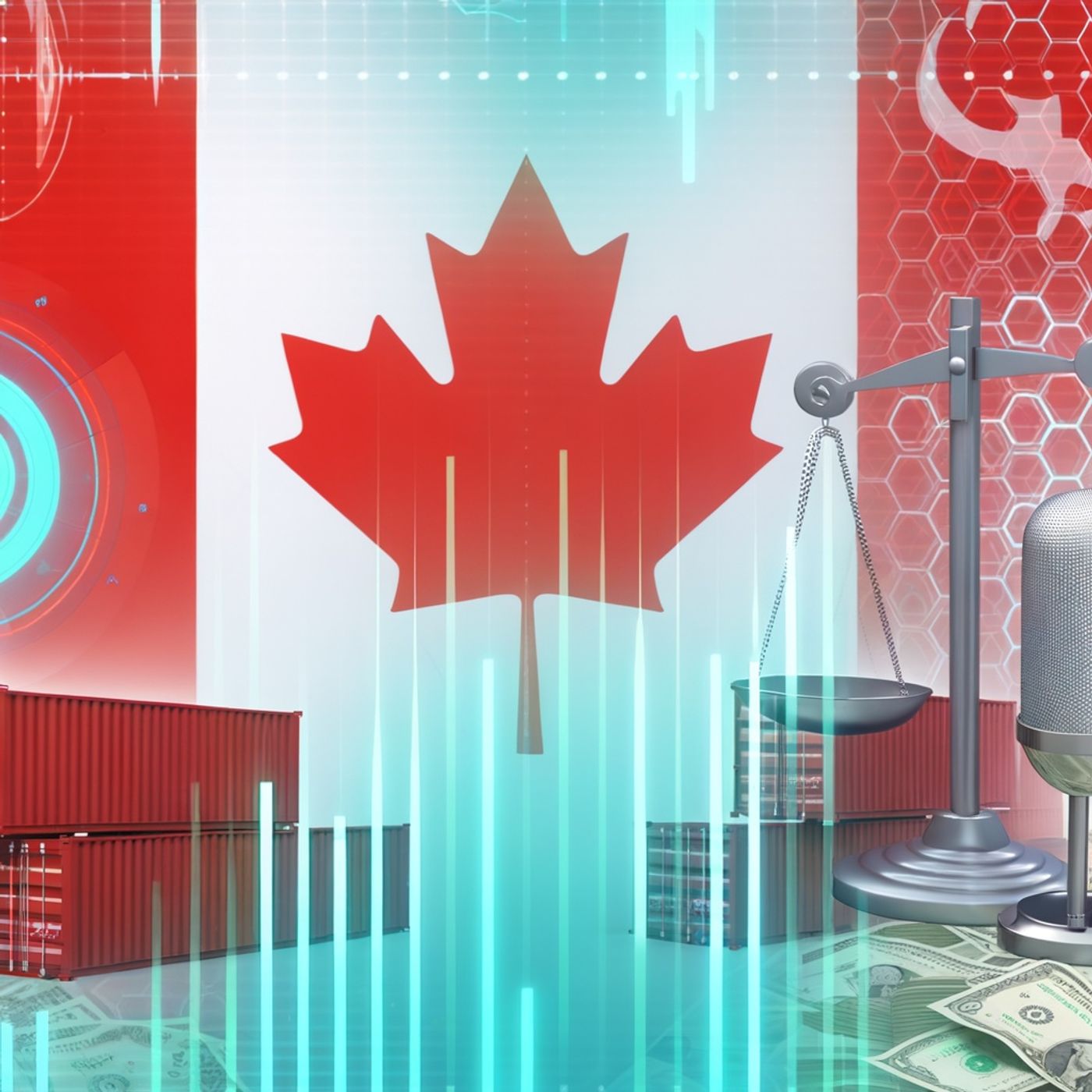US Imposes Steep 35 Percent Tariffs on Canadian Imports Amid Diplomatic Tensions Sparking Economic Uncertainty
Update: 2025-09-28
Description
Listeners, today’s biggest story in cross-border trade is the sudden escalation of tariffs between the United States and Canada. This week, President Donald Trump announced a major hike in tariffs on certain Canadian imports, effective immediately. According to The Daily Star and official White House statements, the tariff rate on these Canadian goods has jumped from 25 percent up to a steep 35 percent. Notably, products covered under the United States-Mexico-Canada Agreement—like many agricultural and automotive items—are exempt from these new measures, but a swath of other sectors will be affected.
The increased tariffs come in direct response to diplomatic friction. After Prime Minister Mark Carney’s recent move to recognize Palestinian statehood at the United Nations, President Trump took swift action, warning on social media that Canada’s policy shift would jeopardize ongoing trade relations and potential trade deals. There is no waiting period for these new U.S. tariffs on Canada—they kicked in on Friday, impacting any non-exempt Canadian goods entering the American market right away.
Business leaders in Canada are voicing their concerns. Daniel Johnson with CityNews Vancouver reports that these tariffs are already shaping expectations for Prime Minister Carney’s upcoming federal budget. The Canadian government is under pressure to offset the blow delivered by Trump’s latest protectionist measures, as the country braces for a swelling federal deficit now projected at $68.5 billion—up sharply from last year. Many in the business community are urging the government to provide not just support for affected industries, but also long-term policies that attract investment and reduce economic uncertainty at a time of rising trade barriers.
On the consumer and broader economic front, the ongoing escalation of tariffs is raising prices for imported goods. A recent post from deeded.ca points out that if Canada retaliates in kind—a likely scenario—the cost of U.S. goods in Canada could climb steeply. With Canada importing about half of its goods from the United States, from groceries and machinery to vehicles and household products, everyday Canadians are already feeling the pinch. Higher tariffs mean higher inflation, and that’s leading to predictions of rising interest rates, increased mortgage and loan costs, and a cooling of the Canadian real estate market as consumer spending tightens.
Meanwhile, some sectors like raw materials remain less affected. The Centre for Future Work notes that U.S. tariffs remain lower on Canadian energy and potash, as well as CUSMA-covered goods, reflecting a targeted rather than blanket approach to tariff policy.
For industries and households on both sides of the border, the trade environment remains in flux. As always, we’ll track developments and keep you updated on what this means for Canadian businesses, families, and the overall economy.
Thanks for tuning in to Canada Tariff News and Tracker. Don’t forget to subscribe so you never miss an update. This has been a quiet please production, for more check out quiet please dot ai.
For more check out https://www.quietperiodplease.com/
Avoid ths tariff fee's and check out these deals https://amzn.to/4iaM94Q
This content was created in partnership and with the help of Artificial Intelligence AI
The increased tariffs come in direct response to diplomatic friction. After Prime Minister Mark Carney’s recent move to recognize Palestinian statehood at the United Nations, President Trump took swift action, warning on social media that Canada’s policy shift would jeopardize ongoing trade relations and potential trade deals. There is no waiting period for these new U.S. tariffs on Canada—they kicked in on Friday, impacting any non-exempt Canadian goods entering the American market right away.
Business leaders in Canada are voicing their concerns. Daniel Johnson with CityNews Vancouver reports that these tariffs are already shaping expectations for Prime Minister Carney’s upcoming federal budget. The Canadian government is under pressure to offset the blow delivered by Trump’s latest protectionist measures, as the country braces for a swelling federal deficit now projected at $68.5 billion—up sharply from last year. Many in the business community are urging the government to provide not just support for affected industries, but also long-term policies that attract investment and reduce economic uncertainty at a time of rising trade barriers.
On the consumer and broader economic front, the ongoing escalation of tariffs is raising prices for imported goods. A recent post from deeded.ca points out that if Canada retaliates in kind—a likely scenario—the cost of U.S. goods in Canada could climb steeply. With Canada importing about half of its goods from the United States, from groceries and machinery to vehicles and household products, everyday Canadians are already feeling the pinch. Higher tariffs mean higher inflation, and that’s leading to predictions of rising interest rates, increased mortgage and loan costs, and a cooling of the Canadian real estate market as consumer spending tightens.
Meanwhile, some sectors like raw materials remain less affected. The Centre for Future Work notes that U.S. tariffs remain lower on Canadian energy and potash, as well as CUSMA-covered goods, reflecting a targeted rather than blanket approach to tariff policy.
For industries and households on both sides of the border, the trade environment remains in flux. As always, we’ll track developments and keep you updated on what this means for Canadian businesses, families, and the overall economy.
Thanks for tuning in to Canada Tariff News and Tracker. Don’t forget to subscribe so you never miss an update. This has been a quiet please production, for more check out quiet please dot ai.
For more check out https://www.quietperiodplease.com/
Avoid ths tariff fee's and check out these deals https://amzn.to/4iaM94Q
This content was created in partnership and with the help of Artificial Intelligence AI
Comments
In Channel





